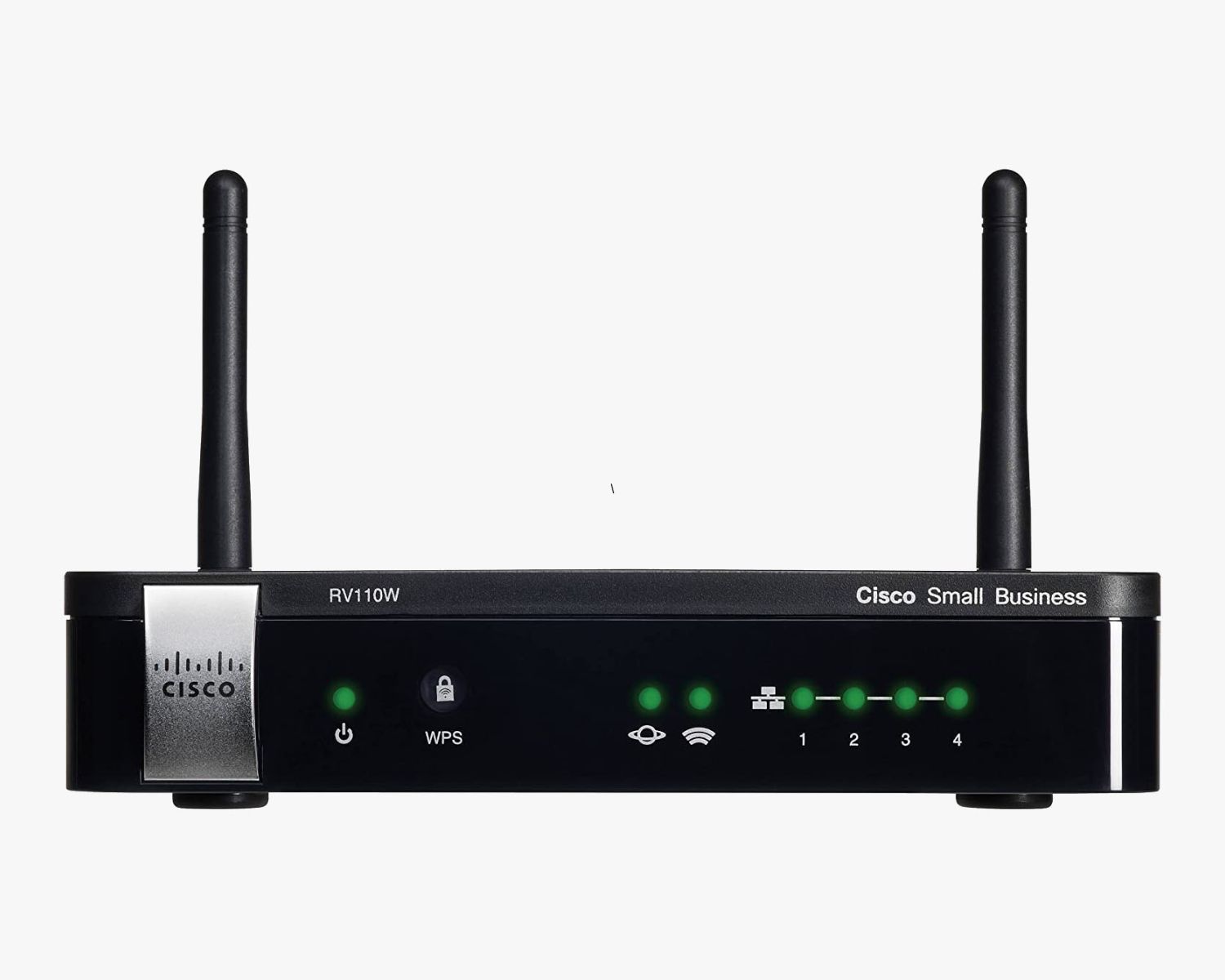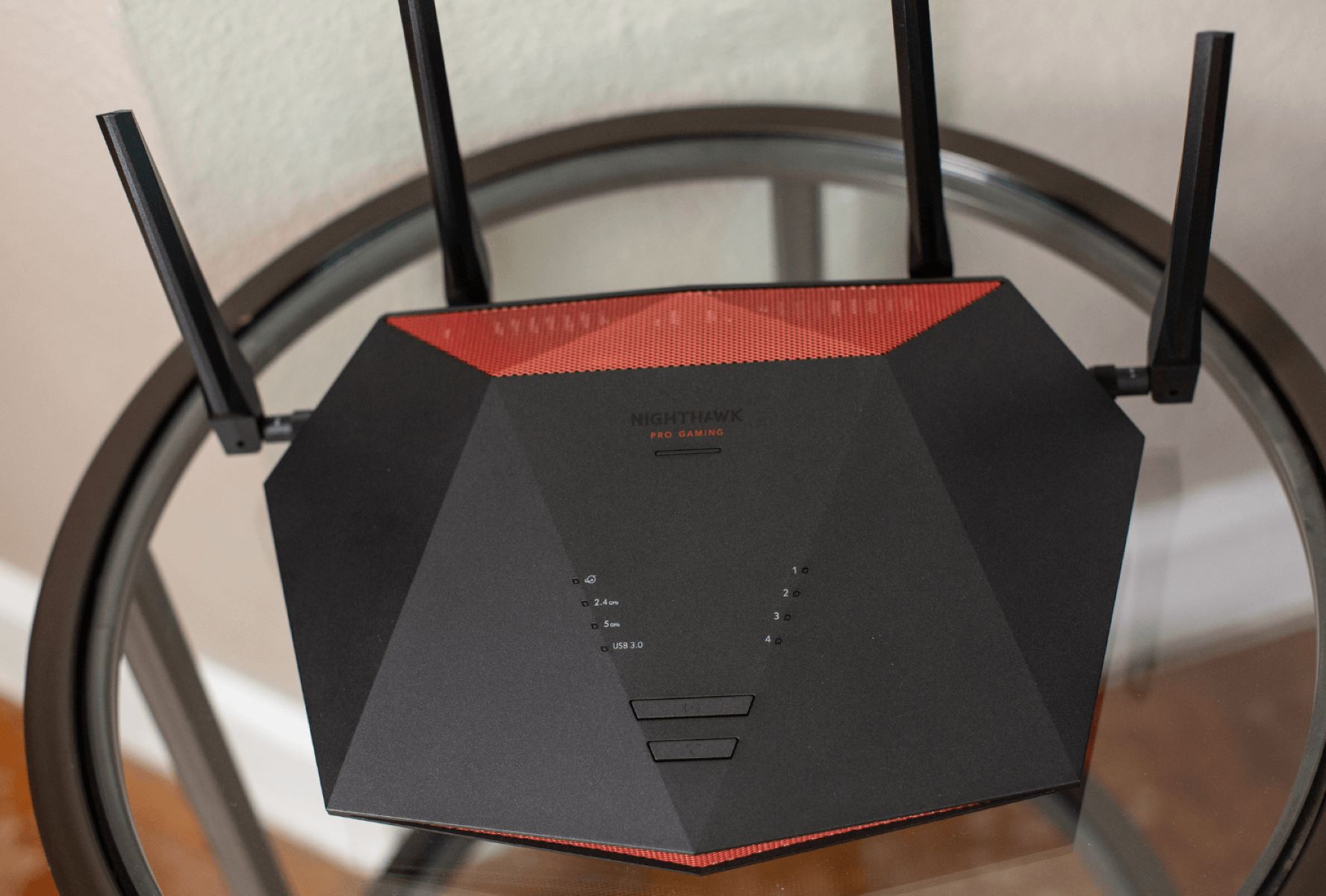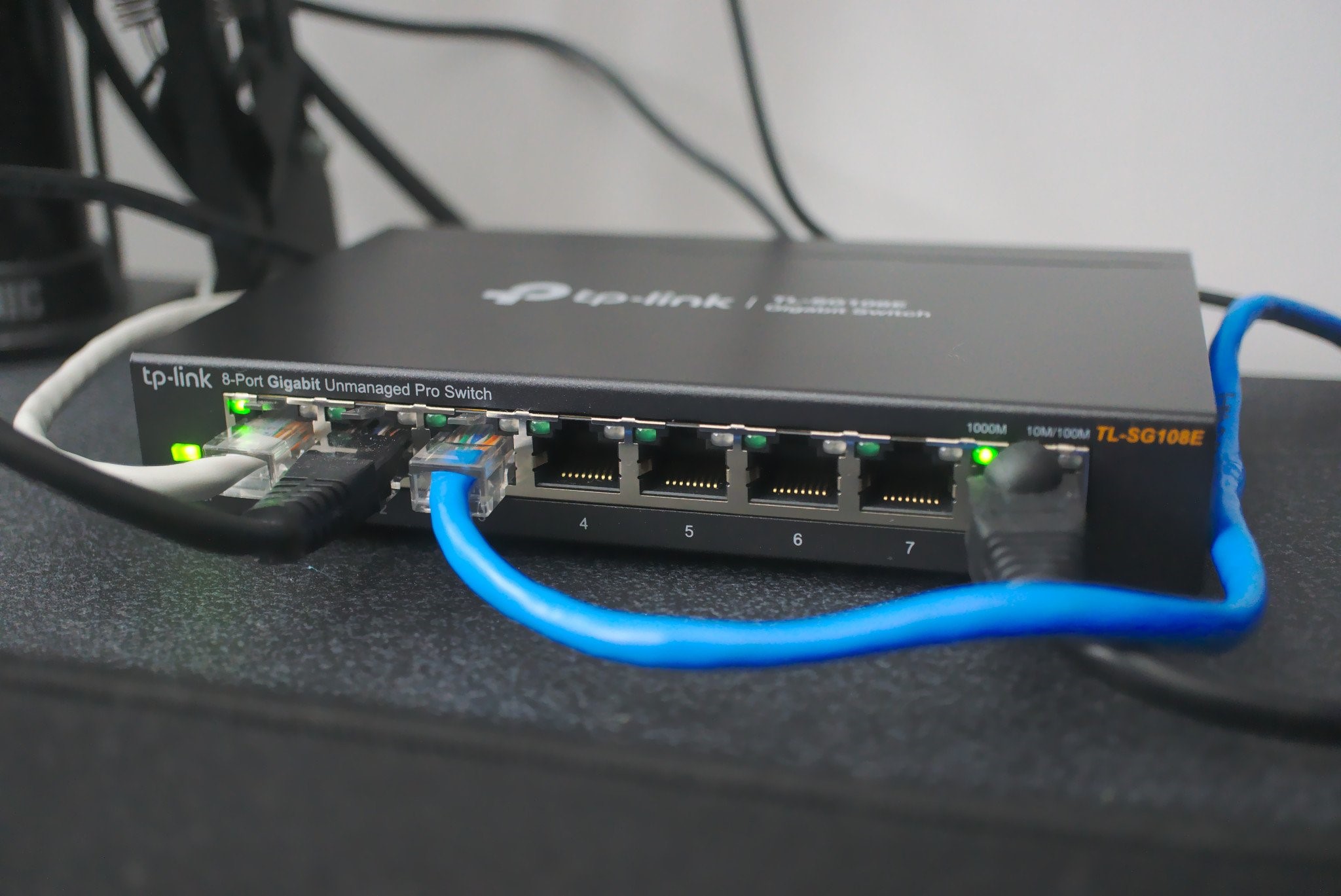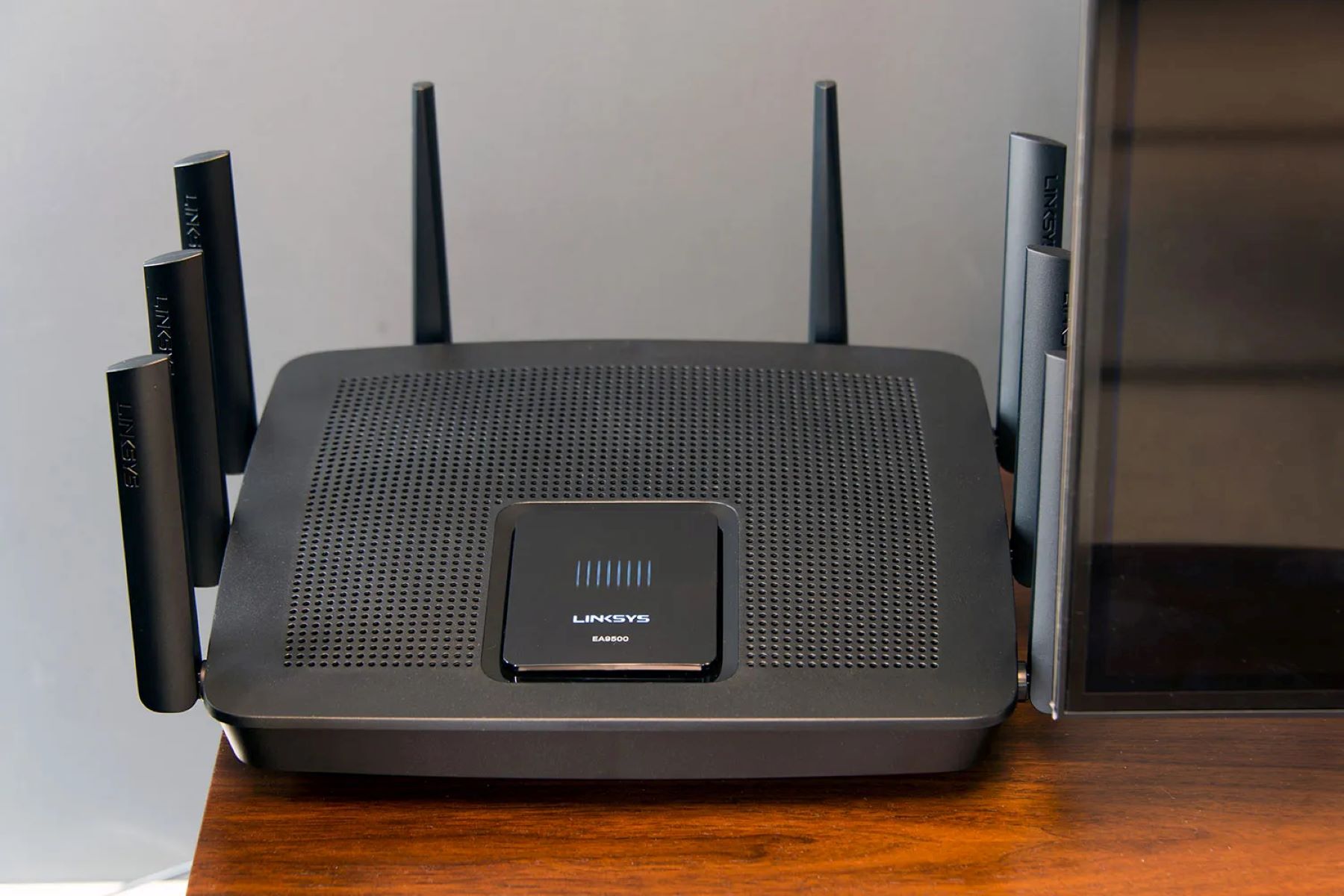Introduction
Welcome to the world of Cisco routers, where data and information flow seamlessly across networks. Cisco routers are renowned for their efficiency in forwarding packets, a fundamental process in network communication. As data packets travel from source to destination, they rely on various routing techniques employed by routers to ensure optimal delivery. In this article, we will explore the default packet-forwarding technique utilized by Cisco routers, its role, advantages, disadvantages, and alternative options.
Packet forwarding refers to the process of directing network packets from one interface to another based on the destination IP address. This critical function is performed by routing devices such as Cisco routers, acting as intermediaries between different networks. The chosen packet-forwarding technique greatly impacts the efficiency, scalability, and performance of the entire network infrastructure.
Understanding the default packet-forwarding technique employed by Cisco routers is crucial for network administrators and IT professionals. By comprehending the underlying principles and functionality, one can better optimize network performance, troubleshoot issues, and make informed decisions regarding alternative packet-forwarding techniques.
Definition of Packet-Forwarding Technique
Before diving into the details of the default packet-forwarding technique used by Cisco routers, it’s important to have a clear understanding of what exactly a packet-forwarding technique entails.
A packet-forwarding technique, also known as a forwarding method or forwarding algorithm, determines how routers handle incoming network packets and determine the most appropriate path for their delivery. It involves analyzing the destination address of a packet and making decisions based on routing tables, policies, and other factors.
In simpler terms, the packet-forwarding technique acts as a roadmap for routers to navigate the vast interconnected web of networks. It enables routers to efficiently and effectively forward packets to their intended destinations based on predetermined criteria.
Various packet-forwarding techniques exist, each with its own advantages and trade-offs. These techniques include:
- Fixed Routing: This technique utilizes static routing tables that are preconfigured on the router. The path for each destination is manually specified and remains unchanged unless manually updated.
- Static Routing: Similar to fixed routing, static routing involves manually configuring paths for different destinations. However, static routing allows for more flexibility by supporting the use of routing protocols to update routing tables dynamically.
- Dynamic Routing: Dynamic routing relies on routing protocols such as OSPF (Open Shortest Path First), EIGRP (Enhanced Interior Gateway Routing Protocol), or RIP (Routing Information Protocol). These protocols enable routers to exchange routing information and build dynamic routing tables to determine the most efficient paths for packet forwarding.
The default packet-forwarding technique used by Cisco routers may vary depending on the specific router model and software version. Cisco IOS routers commonly implement the Cisco Express Forwarding (CEF) mechanism as their default packet-forwarding technique.
Now that we’ve established the definition of a packet-forwarding technique, let’s explore the specific technique employed by Cisco routers and its significance in network communication.
The Role of Packet Forwarding in Cisco Routers
Packet forwarding plays a vital role in the operation of Cisco routers, as it is responsible for efficiently routing network packets to their intended destinations. By understanding the role of packet forwarding in Cisco routers, we can appreciate its significance in network communication.
At a fundamental level, packet forwarding enables routers to make intelligent routing decisions by examining the destination IP address of incoming packets. This process involves consulting routing tables, which contain information about the network topology and available paths to different destinations.
Cisco routers serve as the backbone of network infrastructure, transferring data packets across vast networks, and ensuring that information reaches its desired endpoint. The packet forwarding mechanism in Cisco routers allows for seamless connectivity and efficient transmission of data across networks of varying sizes.
One of the primary functions of packet forwarding in Cisco routers is to facilitate efficient data transfer. By examining the destination IP address, the router determines the optimal path to forward the packet, maximizing network performance and minimizing latency. This is crucial in maintaining a smooth user experience, especially in bandwidth-intensive applications such as video streaming and real-time communication.
Another role of packet forwarding in Cisco routers is to enable network scalability. As networks expand and new devices are added, packet forwarding ensures that the infrastructure can handle increasing traffic demands. By dynamically routing packets based on the destination IP address, routers effectively distribute network load and prevent congestion.
Packet forwarding also plays a crucial role in network security within Cisco routers. Routers can implement access control lists (ACLs) and firewall rules to inspect packets and make forwarding decisions based on specified policies. This allows for the enforcement of network security measures, protecting against unauthorized access and potential threats.
Overall, the role of packet forwarding in Cisco routers is to facilitate efficient, secure, and scalable network communication. It ensures that data packets are directed to their intended destinations, optimizing network performance and enabling seamless connectivity across diverse networks.
Understanding the Default Packet-Forwarding Technique in Cisco Routers
When it comes to Cisco routers, the default packet-forwarding technique plays a crucial role in determining how network packets are processed and forwarded. Understanding this default technique is essential for effectively managing and optimizing network performance.
The default packet-forwarding technique used by Cisco routers is known as Cisco Express Forwarding (CEF). CEF is a high-performance, advanced packet-forwarding mechanism designed to efficiently handle packet switching and routing processes.
Unlike traditional packet-forwarding techniques that rely on per-packet processing, CEF utilizes specialized data structures, such as the Forwarding Information Base (FIB) and the Adjacency table, to expedite packet forwarding. These data structures enable Cisco routers to store and quickly retrieve information about the network topology and forwarding paths.
Cisco routers employing CEF maintain a routing table that reflects the network topology and is used to populate the FIB and Adjacency tables. The FIB contains information about the available routes to different destinations, while the Adjacency table stores details about directly connected neighbors.
When a packet arrives at a Cisco router using CEF, it undergoes a process known as adjacency lookup. This involves checking the Adjacency table to determine the next-hop neighbor to which the packet should be forwarded. Once the appropriate neighbor is identified, the packet is encapsulated and transmitted through the corresponding interface.
CEF’s primary advantage is its ability to perform forwarding decisions in a fast and deterministic manner. By maintaining precomputed switching paths in the FIB, CEF avoids the need for per-packet processing, resulting in optimized packet forwarding rates and reduced latency.
Moreover, CEF offers superior scalability as it efficiently handles network growth by sharing forwarding information among multiple line cards and distributing the forwarding load. This distributed architecture allows for seamless expansion without compromising performance.
An important aspect of CEF is its support for load balancing. Through the use of Equal-Cost Multipath (ECMP), CEF evenly distributes traffic across multiple equal-cost paths, maximizing the utilization of available network resources.
While the default packet-forwarding technique in Cisco routers is CEF, it is worth noting that alternative packet-forwarding mechanisms, such as Fast Switching and Process Switching, may be supported on older router models or in specific scenarios where CEF is not applicable.
By gaining an understanding of the default packet-forwarding technique in Cisco routers, network administrators can optimize routing decisions, improve network performance, and troubleshoot any potential issues that may arise.
Advantages of the Default Packet-Forwarding Technique in Cisco Routers
The default packet-forwarding technique in Cisco routers, Cisco Express Forwarding (CEF), offers a range of advantages that contribute to enhanced network performance, scalability, and efficiency. Understanding these advantages can help network administrators make informed decisions when optimizing their Cisco router setups.
One of the key advantages of CEF is its high-performance forwarding capabilities. By utilizing efficient data structures like the Forwarding Information Base (FIB) and the Adjacency table, CEF allows for fast lookup and forwarding decisions. This translates into reduced packet processing time and improved overall network latency.
Another advantage of CEF is its scalability. Cisco routers employing CEF can handle increasing network traffic and growing network sizes without compromising performance. With CEF, forwarding decisions are distributed among line cards, enabling efficient load balancing and preventing bottlenecks.
CEF’s scalability is further enhanced by its support for Equal-Cost Multipath (ECMP) load balancing. This feature allows the router to distribute traffic evenly across multiple equal-cost paths, maximizing available bandwidth and preventing congestion.
CEF also improves network efficiency by enabling the efficient utilization of available network resources. With CEF, routing decisions are made in a deterministic manner, based on precomputed switching paths stored in the FIB. This eliminates the need for per-packet processing and reduces processing overhead, resulting in higher network throughput.
Moreover, CEF offers superior support for network stability and resilience. By maintaining a consistent forwarding state, even in the event of link failures or routing changes, CEF ensures that packets are forwarded along the most optimal paths and that network connectivity remains uninterrupted.
Another advantage of CEF is its compatibility with various routing protocols. Cisco routers utilizing CEF can seamlessly integrate with routing protocols such as OSPF, EIGRP, and BGP, allowing for efficient exchange of routing information and dynamic updates of the forwarding tables.
From a management perspective, CEF simplifies network troubleshooting and monitoring. With CEF, network administrators can readily identify and diagnose any issues related to packet forwarding. Additionally, CEF provides detailed information about forwarding paths and traffic statistics, which can be invaluable for network optimization and capacity planning.
Overall, the default packet-forwarding technique in Cisco routers, CEF, offers several notable advantages. Its high performance, scalability, efficient resource utilization, network stability, protocol compatibility, and ease of management make it a preferred choice for network administrators seeking optimal packet forwarding capabilities in their Cisco router deployments.
Disadvantages of the Default Packet-Forwarding Technique in Cisco Routers
While the default packet-forwarding technique in Cisco routers, Cisco Express Forwarding (CEF), offers many benefits, it is important to consider its potential disadvantages. Understanding these drawbacks can help network administrators make informed decisions and explore alternative packet-forwarding techniques when necessary.
One potential disadvantage of CEF is its higher initial configuration complexity compared to simpler packet-forwarding techniques. Setting up and configuring CEF requires administrators to have a deeper understanding of the routing protocols, FIB, and adjacency tables. This complexity can make initial deployments more time-consuming and require additional expertise.
Another drawback of CEF is that it consumes more memory compared to other packet-forwarding techniques. The additional memory overhead is due to the need to maintain and store routing tables, FIB, and adjacency tables, which can affect the overall memory utilization of the router.
CEF’s dependency on the underlying routing protocols can also be seen as a disadvantage. Routing protocol failures or inconsistencies can impact the accuracy of the FIB and adjacency tables, leading to potential packet forwarding issues. Administrators need to ensure that the routing protocols are properly configured and monitored to maintain optimal CEF performance.
While CEF supports load balancing, it might not be suitable for scenarios where more granular load balancing or traffic engineering is required. CEF’s load balancing capabilities are based on equal-cost multipath (ECMP) and rely on the router’s routing table. In certain situations, such as scenarios with unequal-cost paths or specific traffic shaping requirements, alternative packet-forwarding techniques might be more suitable.
Another disadvantage of CEF is its potential limitation in supporting certain advanced services or specific network topologies. Some advanced features, such as Network Address Translation (NAT) or policy-based routing, might require additional configurations or might not be fully supported by CEF. Similarly, in complex network environments with multi-vendor devices or non-standard network architectures, alternative packet-forwarding methods might be necessary to meet specific requirements.
Lastly, in certain scenarios with very low packet-forwarding requirements or resource-constrained environments, the additional overhead of CEF might not be justified. Simplified packet-forwarding techniques, such as Fast Switching or Process Switching, might be more suitable in such cases, as they offer lower resource consumption at the cost of reduced forwarding performance.
It is important for network administrators to evaluate the specific requirements and constraints of their network environment when considering the default packet-forwarding technique in Cisco routers. Understanding the potential disadvantages can help determine whether CEF is the most appropriate choice or if alternative packet-forwarding methods should be explored.
Alternatives to the Default Packet-Forwarding Technique in Cisco Routers
While the default packet-forwarding technique in Cisco routers, Cisco Express Forwarding (CEF), offers many advantages, there are alternative packet-forwarding techniques available that network administrators can consider based on their specific requirements and network environments.
One alternative to CEF is Fast Switching. Fast Switching is a legacy packet-forwarding technique that offers lower resource consumption compared to CEF. In Fast Switching, the first packet of a flow is processed by the router’s central processing unit (CPU), and the forwarding path for subsequent packets is cached. This caching mechanism allows for faster subsequent forwarding decisions, improving packet forwarding performance. However, Fast Switching is limited in terms of scalability and might not offer the same advanced features as CEF.
Process Switching is another alternative to CEF. It involves the router’s CPU processing each packet individually, making forwarding decisions on a per-packet basis. While Process Switching offers great flexibility and support for advanced services, it comes at the expense of increased CPU utilization and reduced forwarding performance. Therefore, Process Switching is typically used only in scenarios where advanced services or special handling requirements are necessary.
Multi-Layer Switching (MLS) is an advanced packet-forwarding technique that combines the speed of Layer 2 switching with the flexibility and features of Layer 3 routing. MLS utilizes Application-Specific Integrated Circuit (ASIC) technology to perform forwarding decisions in hardware, resulting in high forwarding performance and low latency. It offers scalability and support for advanced features, making it suitable for large enterprise networks with complex traffic patterns.
Another alternative is Policy-Based Routing (PBR), which allows network administrators to define specific policies to influence the path selection and forwarding of packets. With PBR, forwarding decisions are based on criteria such as source IP address, destination IP address, or specific criteria defined in access control lists (ACLs). PBR offers greater control and flexibility in routing decisions but can require additional configuration and management overhead.
Software-Defined Networking (SDN) presents yet another alternative to traditional packet-forwarding techniques. SDN separates the control plane from the data plane, enabling centralized management and programmable network behavior. By utilizing technologies like OpenFlow, network administrators can control packet forwarding decisions through a centralized controller, allowing for dynamic and flexible traffic management.
Finally, in some scenarios, where simplicity and low resource consumption are essential, Router-on-a-Stick (RoAS) can be employed. RoAS involves using a router, typically with limited physical interfaces, to handle multiple virtual local area networks (VLANs) through a single physical interface. This allows for the consolidation of routing functions and reduces the need for multiple physical router interfaces.
When selecting an alternative packet-forwarding technique, it is essential to consider the specific requirements of the network environment, including performance needs, scalability, support for advanced features, and management overhead. Network administrators should carefully evaluate the advantages and trade-offs of each alternative to determine the most suitable packet-forwarding technique for their Cisco router deployment.
Conclusion
Packet forwarding is a critical process in Cisco routers that determines how network packets are efficiently routed to their intended destinations. Understanding the default packet-forwarding technique, Cisco Express Forwarding (CEF), and its role in network communication is essential for network administrators.
We explored the definition of packet-forwarding techniques and the significance of packet forwarding in Cisco routers. We delved into the details of CEF, including its architecture, advantages, and scalability. CEF’s ability to make forwarding decisions in a fast and deterministic manner, combined with its support for load balancing and network stability, makes it a popular choice for many network environments.
However, it’s important to acknowledge that CEF may have some disadvantages, such as initial configuration complexity, memory consumption, and limitations in certain advanced network scenarios. In such cases, alternative packet-forwarding techniques like Fast Switching, Process Switching, Multi-Layer Switching, Policy-Based Routing, SDN, or Router-on-a-Stick (RoAS) can be considered to meet specific requirements.
Ultimately, selecting the most suitable packet-forwarding technique for Cisco routers requires careful consideration of the network environment, performance needs, scalability, and support for advanced features. Network administrators should weigh the advantages and disadvantages of each technique to make informed decisions that optimize their Cisco router setups.
By continually exploring and evaluating packet-forwarding techniques, network administrators can effectively manage and optimize network performance, ensuring seamless connectivity and efficient data transfer across their Cisco router deployments.

























